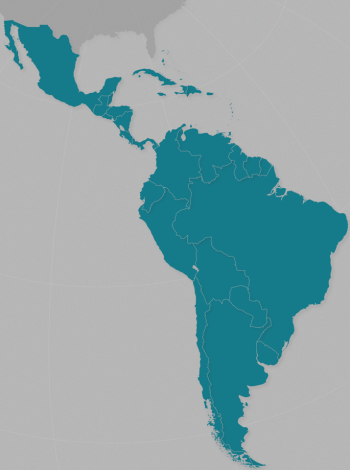Nahuatl or Mexican is a Uto-Aztecan macrolanguage spoken in Mexico and Central America. It has existed since at least the 5th century, although when Southern Uto-Aztecan and Proto-Nahuatl were differentiated (c. 3rd century), it became possible to speak Nahuatl in the strict sense. Today, the Mexican language is the indigenous language of Mexico with the largest number of speakers, with about three million, most of them bilingual with Spanish or trilingual with English.
With the expansion of the Coyotlatelca culture during the 5th and 6th centuries A.D. in Mesoamerica, the language began its rapid spread through the Neovolcanic Axis and spread along the Pacific coast. It thus gave rise to Pochutec and another branch in the geographical region of Veracruz that would later give rise to Central American Nahuat. Little by little, Nahuatl began to impose itself on other Mesoamerican languages until it became the lingua franca of a good part of the area; in a first stage it spread in the central area of Mexico thanks to the Toltecs and the Tepanecas; later, in a second stage, which took place from the 15th century onwards, this language expanded throughout the territories dominated by the Mexica Empire.
During the centuries that preceded the Spanish and Tlaxcaltec conquest of the Mexica Empire, the Mexica had incorporated a large part of central Mexico into their domain. The imperial influence turned the variant of Nahuatl spoken by the inhabitants of Mexico-Tenochtitlan, capital of the empire, into a language of prestige in the Mesoamerican region. After the arrival of the Spaniards in Mexico, the grammar of Nahuatl, which until then had no Latin spelling, was systematized. The Spanish wrote many chronicles, grammars, poetic works and administrative documents in Nahuatl during the 16th and 17th centuries. This early written practice, generally based on the Tenochtitlan variant, has been called Classical Nahuatl and is one of the most documented and studied languages in the Americas. Due to the popularity and prestige of the language and, in part, to territorial expansion by the conquistadors, King Philip II of Spain established Nahuatl as the official language of the Viceroyalty of New Spain in 1570.
Today, several variants of Nahuatl are found in scattered communities, mainly in rural areas of central Mexico and along the Gulf Coast. There are considerable differences between variants and some are not mutually intelligible. The Huasteca region concentrates a large portion of the speakers, with Huasteca Mexican being the most widely spoken variant. All varieties have had varying degrees of influence from Spanish. None of the contemporary variants is identical to Classical Nahuatl, although the central variants, spoken around the Valley of Mexico, are more closely related to it than those in the periphery.
Dialectological evidence indicates that the modern variants did not evolve from the variant spoken in Tenochtitlan, but from regional variants already existing before the codification of the so-called Classical Nahuatl. Following this idea, it has been proposed that the language of the capital was a koine resulting from contact between speakers of different variants. Today it is spoken mainly in 17 of Mexico's 31 states (Puebla, Hidalgo, Veracruz, San Luis Potosí, Oaxaca, Durango, Guerrero, Jalisco, Michoacán, Morelos, Nayarit, Nuevo León, Tlaxcala, Colima, Tamaulipas, Tabasco, Estado de México), in Mexico City and in Nahua communities in the United States.
Megathreads and spaces to hang out:
- ❤️ Come listen to music with your fellow Hexbears in Cy.tube
- 💖 Come talk in the New weekly queer thread
- 🧡 Monthly Neurodiverse Megathread
- 💛 Read about a current topic in the news
- ⭐️ May Movie Schedule ⭐️
reminders:
- 💚 You nerds can join specific comms to see posts about all sorts of topics
- 💙 Hexbear’s algorithm prioritizes struggle sessions over upbears
- 💜 Sorting by new you nerd
- 🌈 If you ever want to make your own megathread, you can go here nerd
Links To Resources (Aid and Theory):
Aid:
- 💙Comprehensive list of resources for those in need of an abortion -- reddit link
- 💙Resources for Palestine
Theory:


How's it going, Wikipedia main page? You still waging a hilariously-transparent holy war on behalf of US liberals?
SovietsRussians werecaughtaccused of bribing the French judge. NATOids getting their licks in on the state-designated enemy by darkly reminding everyone that those underhanded Russians can't be trusted.:yea:
Overall not even a particularly ideologically-loaded day by Wikipedia standards, but the West Wing thing was just too on the nose for me not to call it out.
Did you know... "... that a reviewer said that playing as a cat 'is at least 50% of the appeal' of Stray?" Is this just an ad, how does that even approach being at all interesting?
:wtyp:
deleted by creator
Holy shit I thought the article was about the actress, not the character :what-the-hell: